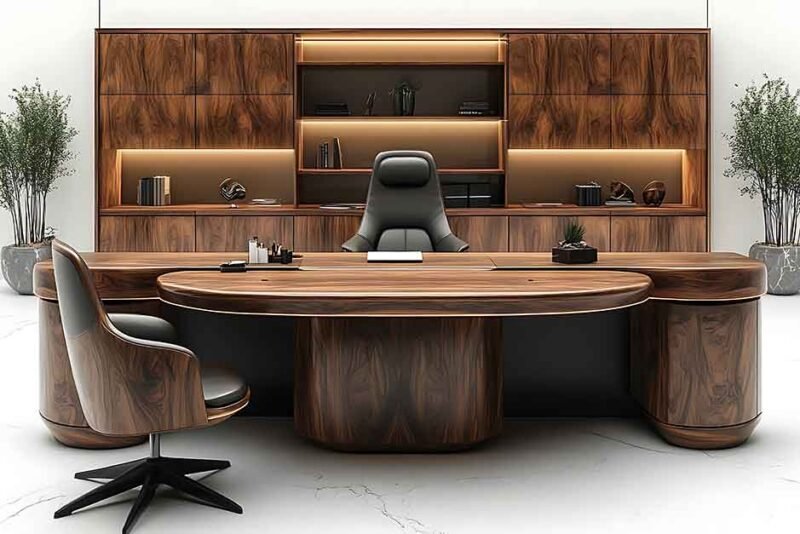An executive suite is a huge statement that reflects authority, professionalism, and the identity of the executive who works there. Whether you’re designing a corner office in a corporate tower or curating a sleek home office for top-level work, creating a polished and purposeful environment is essential. So, how do you furnish your suite to achieve this look?
Well, furnishing this space is about combining function, comfort, and visual sophistication in a way that aligns with leadership and productivity. Here are some key tips and essentials to help you furnish you executive suite like a pro.
Start with a Statement Desk
The desk is the focal point of any executive suite. Go for a substantial, high-quality desk that balances presence with practicality. Materials such as solid wood, glass with metal accents, or matte black finishes give off a modern, polished vibe. L-shaped or U-shaped desks work well in larger suites, offering more surface area and a commanding presence.
Choose an Ergonomic Yet Stylish Executive Chair
Your executive furniture should be comfortable for long hours and elegant enough to elevate the room’s aesthetic. Leather or vegan leather chairs in classic black, white, or espresso convey authority. Mesh or fabric options in sleek designs can work well in more modern or minimalist suites. Ensure the chair has proper lumbar support, height adjustment, and smooth mobility. Comfort is a key part of productivity, and a poorly designed chair can undermine the entire look and function of your space.
Invest in Quality Storage Solutions
Nothing ruins a polished look faster than clutter. Integrated storage solutions, such as file cabinets, credenzas, and bookshelves, should blend into the aesthetic while serving practical needs. Go for closed storage for less attractive items (e.g., paperwork, cables) and open shelving for displaying achievements, books, or art pieces. Matching the finish of your storage furniture with your desk or seating helps maintain visual harmony.
Incorporate a Sophisticated Seating Area
Most executive suites benefit from a small seating area for informal meetings or conversations. A pair of guest chairs or a compact sofa with a coffee table invites collaboration without always having to sit across a desk. Mid-century modern or leather-upholstered pieces could be the best choices. You can add a throw pillow or small rug to create warmth without making the space look too casual.
Add Personal, Tasteful Decor
Décor is where your personality can shine through without overwhelming the space. You could select a few curated items, such as framed certificates, tasteful artwork, sculptures, or meaningful travel pieces. These small touches humanize the space and reflect your values and accomplishments. Plants can also add life and balance to an executive office. Consider low-maintenance options like snake plants, ZZ plants, or a bonsai tree for a touch of calm.
Use a Cohesive Color Palette
Color consistency plays a huge role in perceived polish. Choose a palette of two to three main tones, and maintain that through your furniture, walls, upholstery, and even accessories.
Popular palettes for executive suites include:
- Charcoal, espresso brown, and ivory
- Navy, walnut, and brushed brass
- Matte black, gray, and soft beige
Don’t forget that overly bright or trendy colors may clash with professional expectations. It pays to avoid them.
Avoid Overcrowding the Space
While it can be tempting to fill every corner, negative space is part of good design. Leave room to move freely and keep visual clutter to a minimum. A well-spaced office feels more serene, organized, and authoritative.
Finally, a polished look isn’t just about luxury; it’s about intentionality, coherence, and comfort. With these tips, you can design your executive suite to be a place where leadership, productivity, and professionalism thrive naturally.








